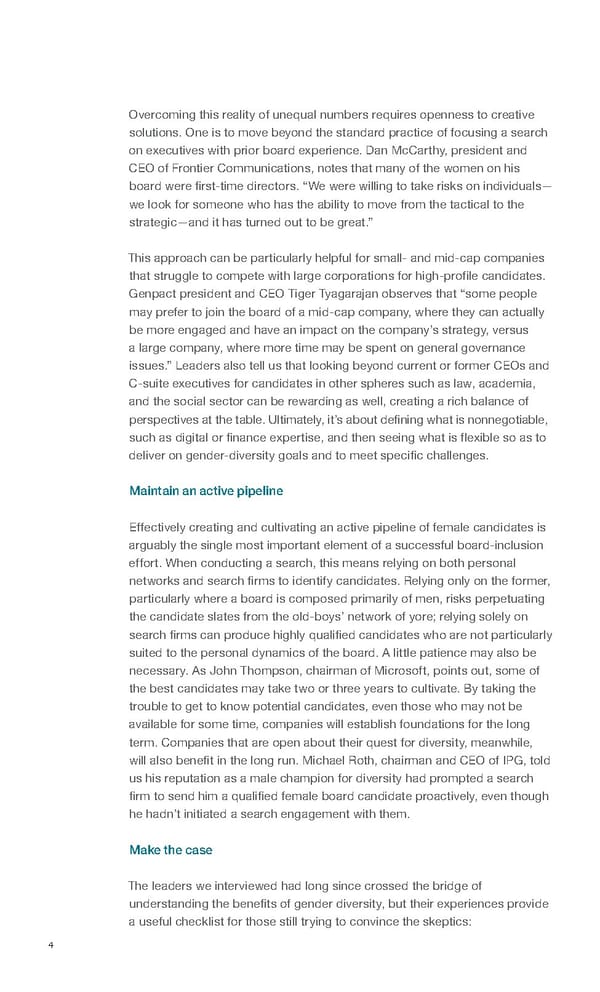Overcoming this reality of unequal numbers requires openness to creative solutions. One is to move beyond the standard practice of focusing a search on executives with prior board experience. Dan McCarthy, president and CEO of Frontier Communications, notes that many of the women on his board were first-time directors. “We were willing to take risks on individuals— we look for someone who has the ability to move from the tactical to the strategic—and it has turned out to be great.” This approach can be particularly helpful for small- and mid-cap companies that struggle to compete with large corporations for high-profile candidates. Genpact president and CEO Tiger Tyagarajan observes that “some people may prefer to join the board of a mid-cap company, where they can actually be more engaged and have an impact on the company’s strategy, versus a large company, where more time may be spent on general governance issues.” Leaders also tell us that looking beyond current or former CEOs and C-suite executives for candidates in other spheres such as law, academia, and the social sector can be rewarding as well, creating a rich balance of perspectives at the table. Ultimately, it’s about defining what is nonnegotiable, such as digital or finance expertise, and then seeing what is flexible so as to deliver on gender-diversity goals and to meet specific challenges. Maintain an active pipeline Effectively creating and cultivating an active pipeline of female candidates is arguably the single most important element of a successful board-inclusion effort. When conducting a search, this means relying on both personal networks and search firms to identify candidates. Relying only on the former, particularly where a board is composed primarily of men, risks perpetuating the candidate slates from the old-boys’ network of yore; relying solely on search firms can produce highly qualified candidates who are not particularly suited to the personal dynamics of the board. A little patience may also be necessary. As John Thompson, chairman of Microsoft, points out, some of the best candidates may take two or three years to cultivate. By taking the trouble to get to know potential candidates, even those who may not be available for some time, companies will establish foundations for the long term. Companies that are open about their quest for diversity, meanwhile, will also benefit in the long run. Michael Roth, chairman and CEO of IPG, told us his reputation as a male champion for diversity had prompted a search firm to send him a qualified female board candidate proactively, even though he hadn’t initiated a search engagement with them. Make the case The leaders we interviewed had long since crossed the bridge of understanding the benefits of gender diversity, but their experiences provide a useful checklist for those still trying to convince the skeptics: 4
 How-to-accelerate-gender-diversity-on-boards Page 3 Page 5
How-to-accelerate-gender-diversity-on-boards Page 3 Page 5